
Category: Streets/Bridges

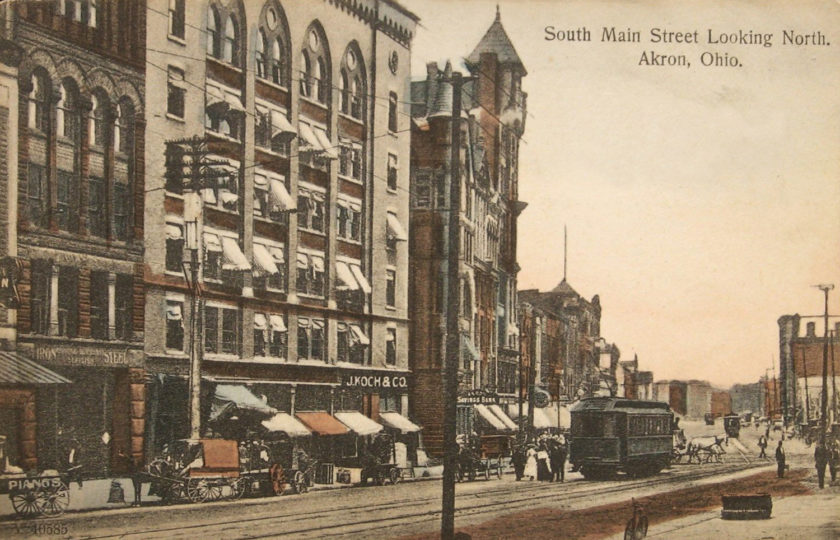
South Main Street
At a time before automobiles ruled the streets, most of Akron’s leading stores, theaters, and hotels were located along South Main Street. Trolley’s and horse carts added to the bustle of downtown.
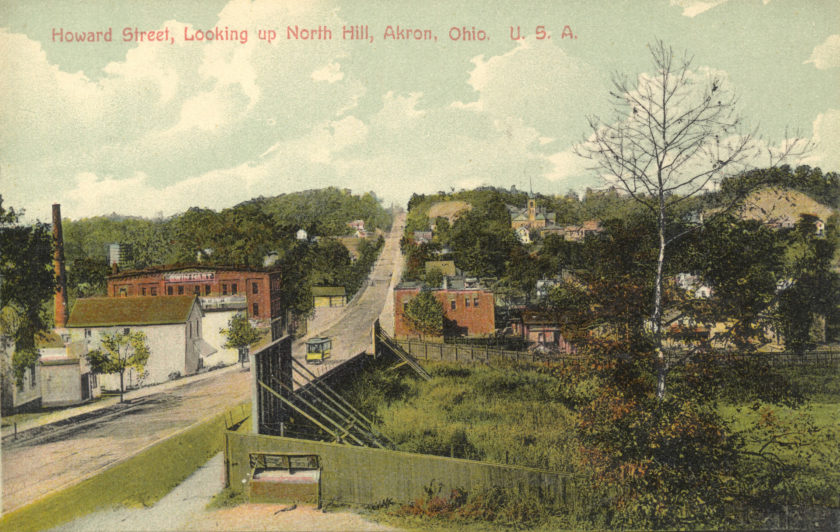
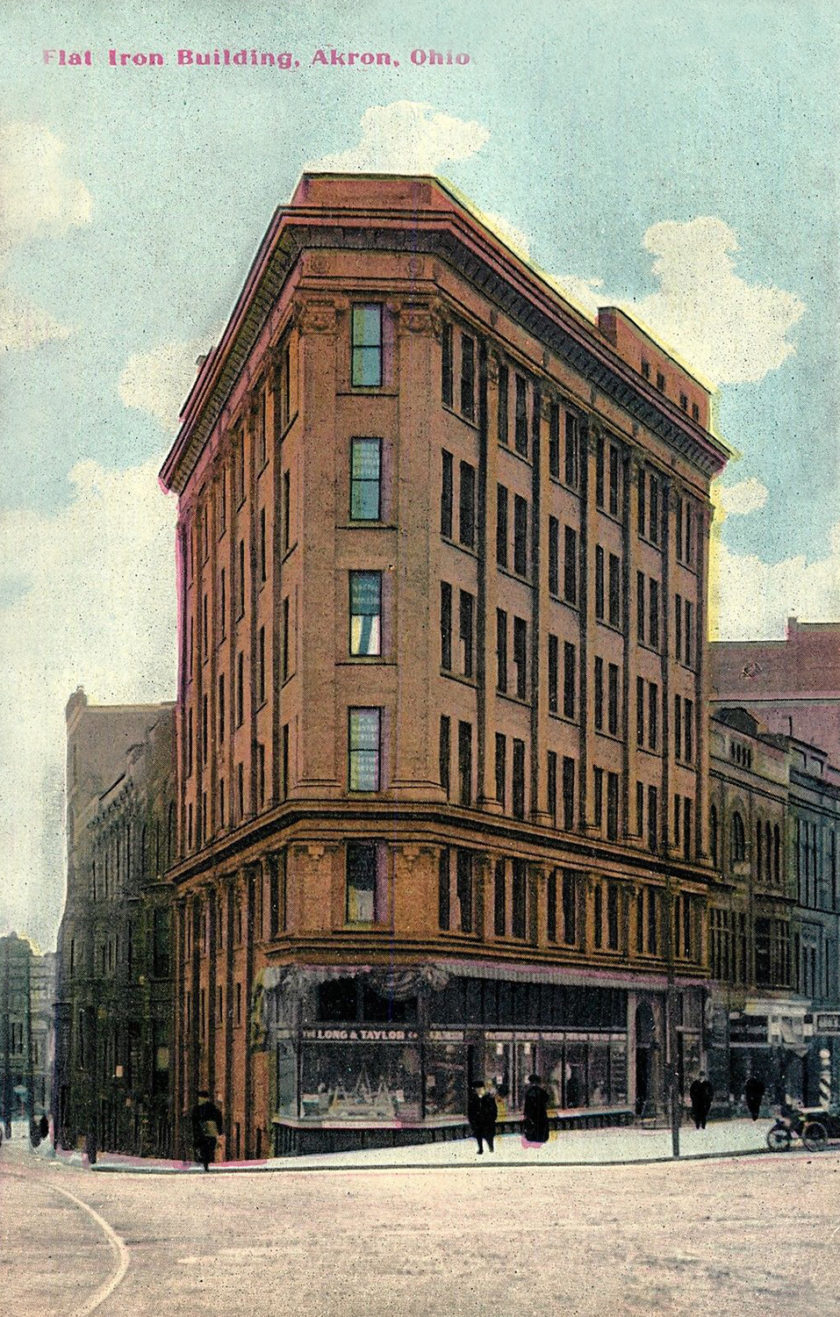
Flat Iron Building
Akron’s Flatiron Building was located at Howard and Main Streets in downtown Akron. It was built in 1907 and demolished in 1967.
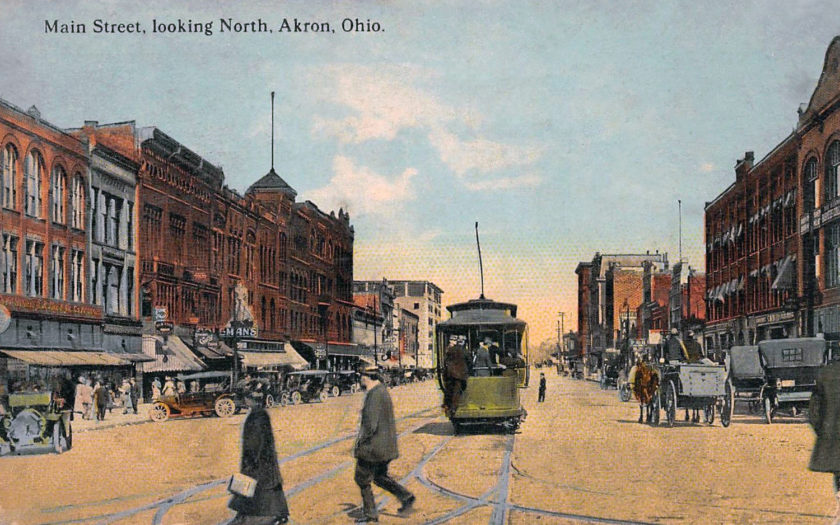
Main Street, looking North
An early view of Akron’s Main Street complete with streetcar, horse cart and vintage automobiles.

East Market Street
Not even the streetcars are operating on this quiet morning along East Market Street.

Parade on South Main
Patriotism is on display as Akronites turn out for a celebration on South Main Street.
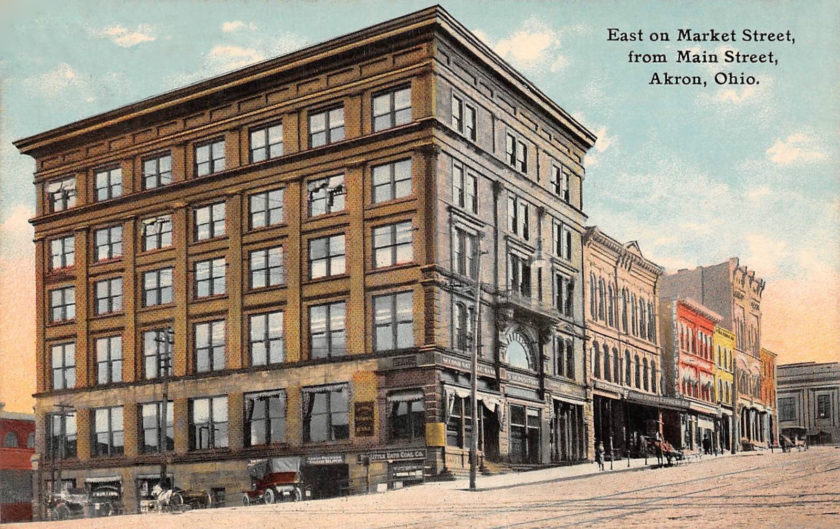
Second National Bank Building
A Glimpse into Akron’s Past: The Second National Bank and The United States Express Company This vintage postcard showcases the main building that once housed the Second National Bank of Akron, a cornerstone of the city’s financial landscape. But just a few doors down the road, a fascinating piece of Akron’s history unfolds with the…
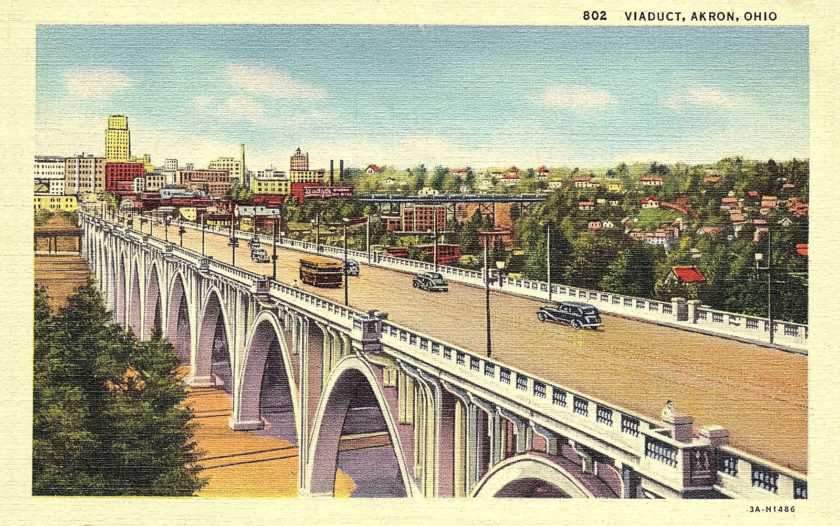
Viaduct
Designed by Howard, Harrington & Ash of Kansas City, this 2,810-foot span opened in 1922, with a grand parade that attracted 150,000 spectators. In 1978, a little more than 50 years after its completion, the bridge was demolished and replaced by the “All-America Y-Bridge.

Main Street Looking North
Another busy day on Akron’s Main Street. The abundance of entertainment, shopping, and dining establishments served as a draw to Akron’s downtown.
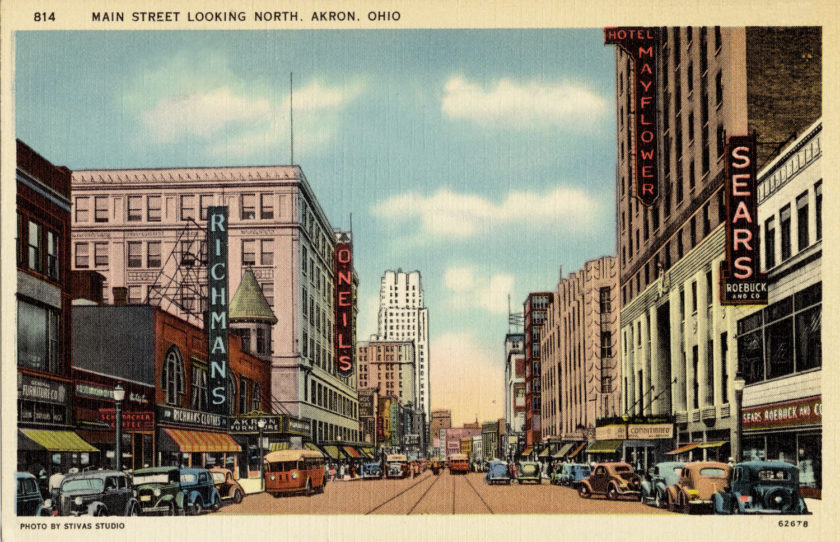
Main Street looking North
Before the rubber giants moved away, Akron’s Main Street was one of the busiest in America. With an abundance of entertainment, shopping, and dining opportunities along with convenient mass transit, it was a natural meeting place.
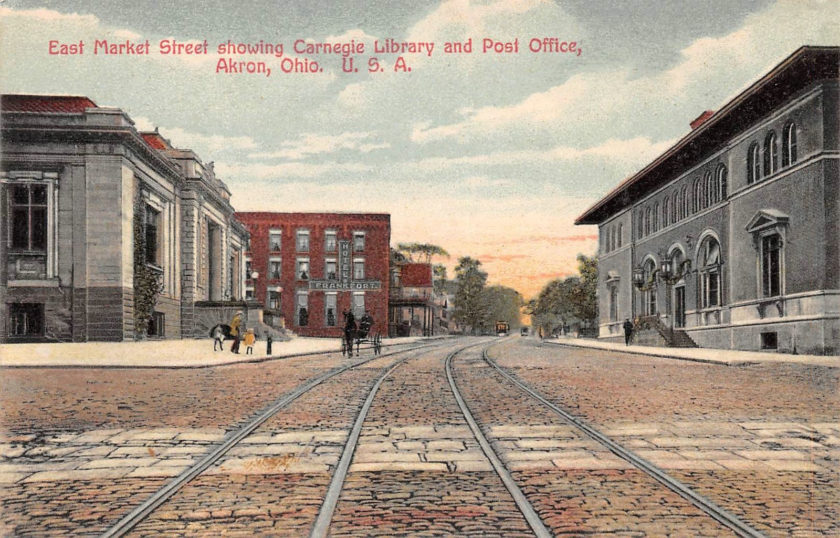
Hotel Frankfort, Market Street
View of the Hotel Frankfort on Akron’s Market Street. The hotel was north of the old Library and Post Office.
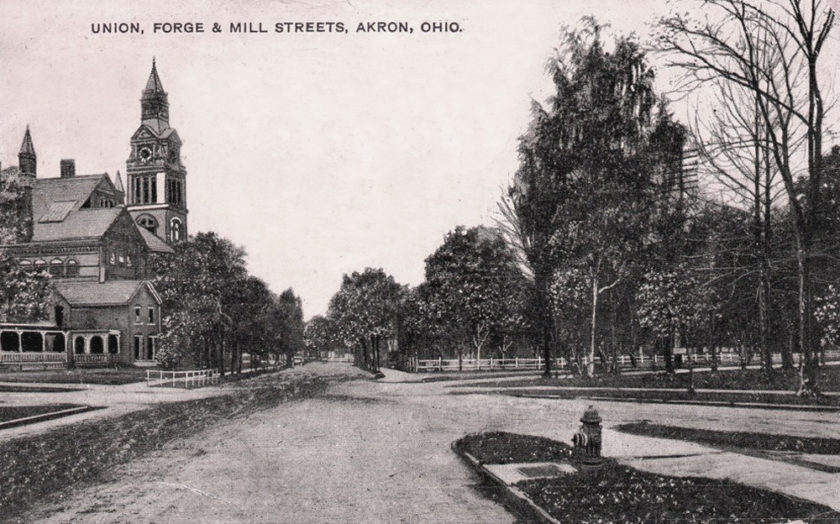
Union, Forge & Mill Streets
A view of the much-changed intersection of Union Street, Forge Street and Mill streets near downtown Akron. Akron’s old High School can be seen on the left side of the image. Union Park is ahead on the right.

Paul E. Werner’s Residence – West Market
Before Rubber made the city, Akronite Paul E. Werner was making a name for himself in the printing/publishing business. In 1886 he began building the Werner Printing and Lithograph Co. which, for a time, was the nation’s largest book publishing company. Rapid changes to international copyright laws in the early 1900s swept Werner’s company into a…
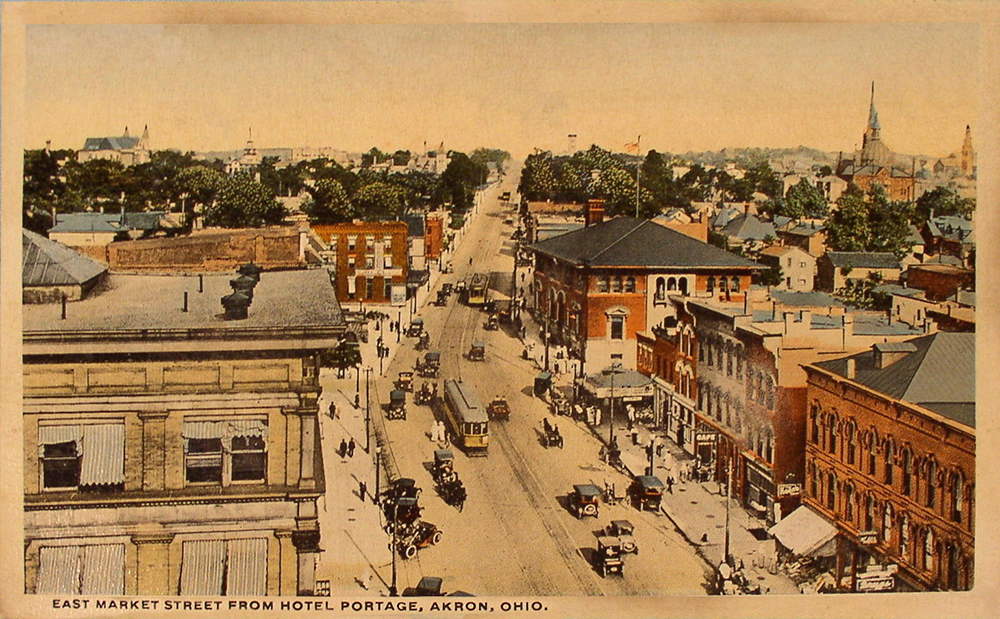

Main Street looking South – O’Neils
Michael O’Neil and his partner Isaac Dyas began serving Akron shoppers in 1877. Their first store was a dry goods store located at 114 East Market Street. Before being sold in 1912, O’neils had several locations in the Akron Canton Area.
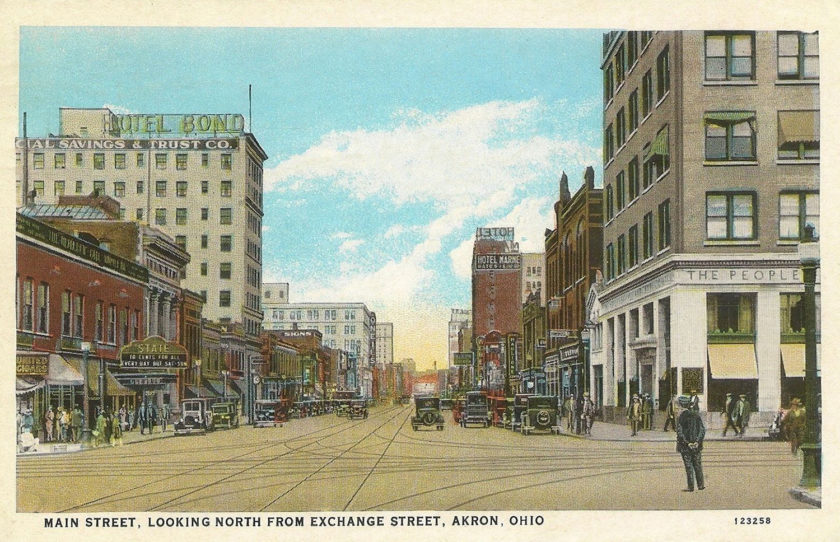

Kenmore – Business District
Kenmore was founded in 1908, as a residential community between the industrial cities of Akron and Barberton. The village which was strategically built along the streetcar lines between the two cities and grew so fast that it earned the nicknamed “fastest–growing city in the world“. Kenmore was annexed by Akron in 1928. Pictured: I.O.O.F. Lodge 927

Gorge – High Bridge
The lower bridge was built in 1895, while the upper double-track streetcar bridge was built in 1903. Both bridges spanned the Gorge between Akron and Cuyahoga Falls, located near the road that is now Front Street, north of Cuyahoga Falls Avenue.
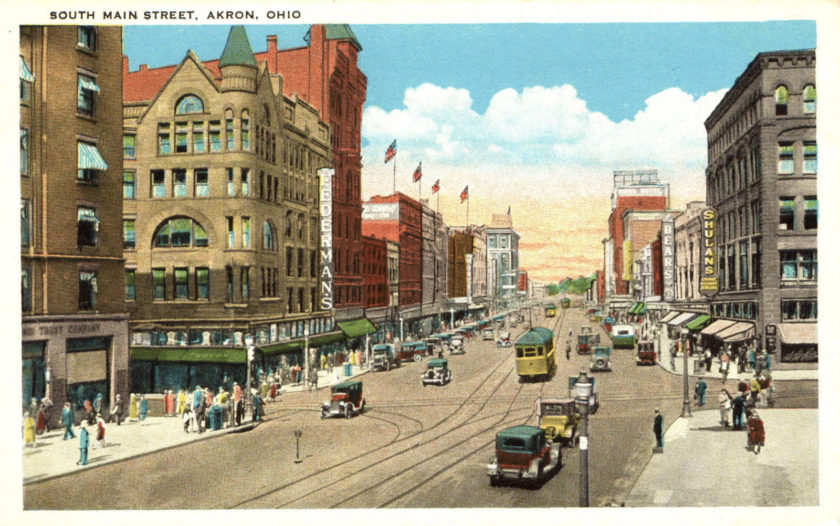
South Main Street
“South Main Street is the main thoroughfare in Akron. Most of the leading stores, theaters, and hotels are located on this street. It is the dividing line for cross streets, all numbered running east and west start from here. State Routes Nos. 8, 18 and 36 pass through South Main Street.” – Federman’s, Shulans, Bear’s,…

South Main Street
Interurban cars are lined up outside the Hamilton Building on South Main Street. It’s another busy day in Akron.
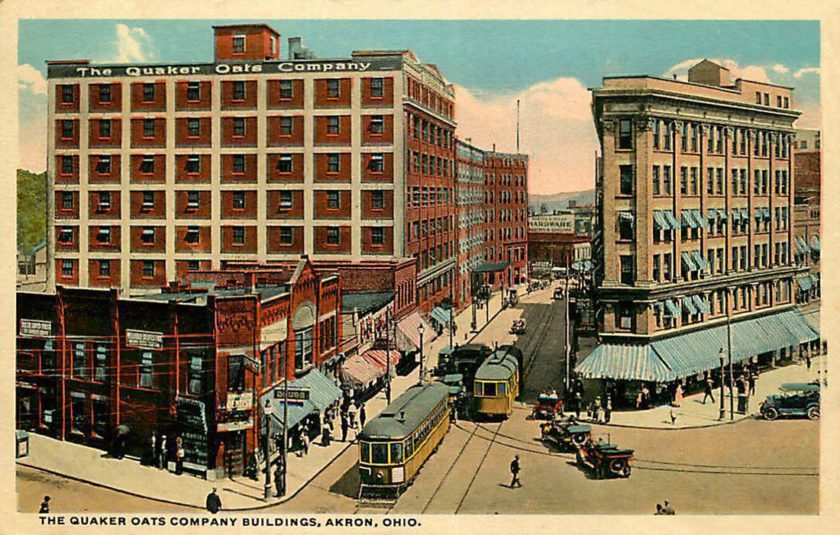
Quaker Oats – Howard Street
Quaker Oats mills looking down Akron’s busy Howard Street. The Flatiron building is seen here towering above the Interurban streetcars.
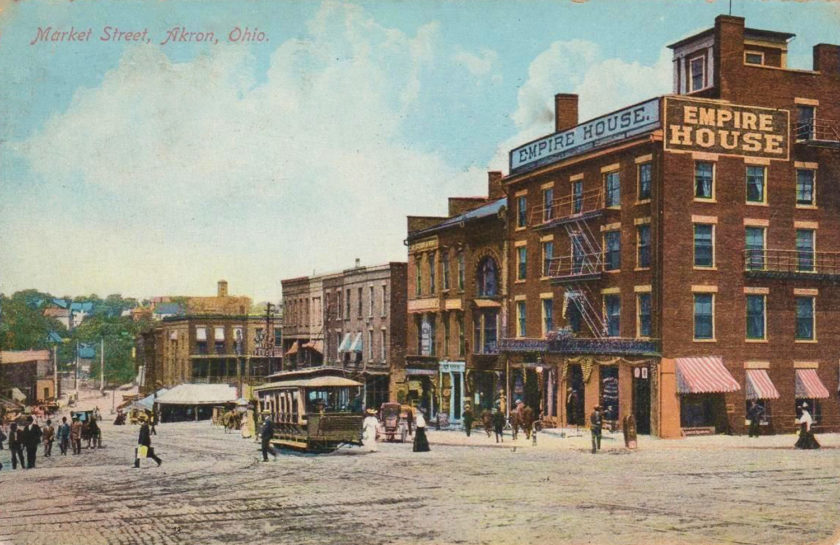
Market Street
Very old view of the Empire House on Akron’s Market Street. The area is busy with activity as a trolley moves through the scene. By 1912, the Empire would be destroyed to make way for the new 250-room Portage Hotel.
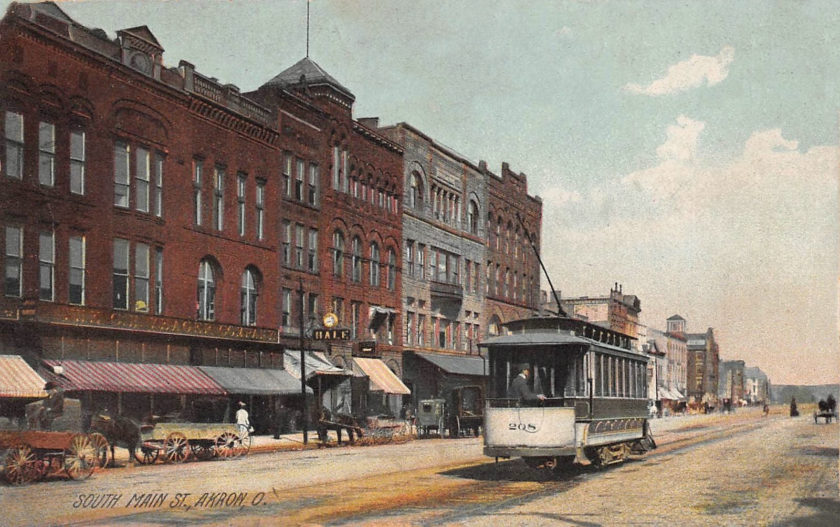
South Main Street
A quiet afternoon on Akron’s South Main Street. As trolley #208 works it’s way through the streets.
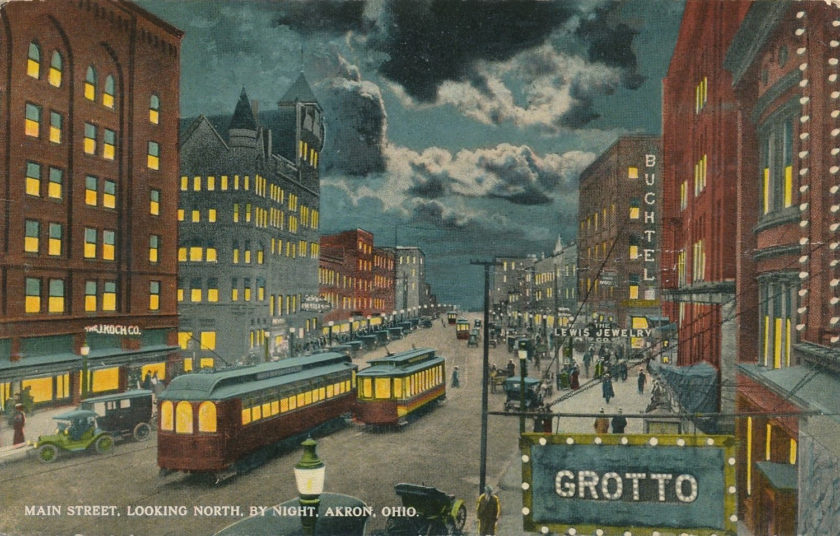
Main Street at Night
The streetlights outside the J. Koch Company, the Grotto, Lewis Jewlery and the Buchtel are all aglow on this chilly night in Akron. Main Street is busy with Interurban cars and trolleys shuttling Akronites in and out of town.